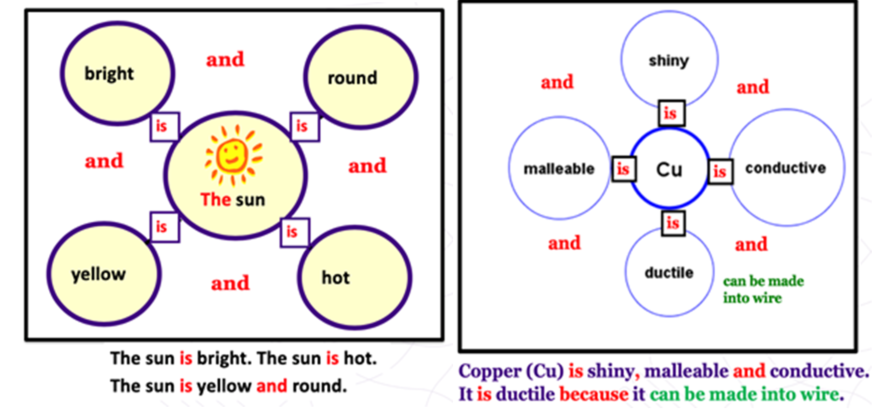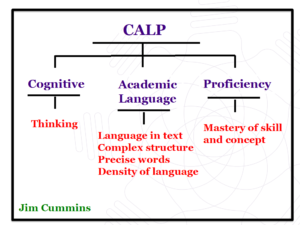Bridging the Language Divide for English Language Learners
NOVEMBER 19, 2019
English Language Learners (ELLs) are one of the fastest growing groups in the U.S., making up nearly 10% of the total K-12 student population in 2018. According to the National Center for Education Statistics, nearly 5 million students are classified as ELLs. Are teachers prepared to meet their needs?
At Thinking Maps, we're big believers in research and evidence. Our training and strategies are grounded in cognitive science to leverage the ways the brain prefers to learn and organize information. Now, a third-party study shows that these strategies are correlated with measurable and meaningful improvements in student achievement results.
Learning in a New Language: Understanding Challenges for ELLs
Imagine that you are required to take a class in an unfamiliar subject taught in a language you do not currently speak. How well do you think you would do? How long would it take for your language skills to catch up enough for you to start engaging with the actual content of the course? How much material would you miss in the meantime? What scaffolds might you use to help you along the way?
These are the challenges faced by ELLs in the classroom every day. Language barriers and content-area knowledge gaps make it difficult for ELLs to engage with grade-level material.
- Students with limited English proficiency may not have the vocabulary and language skills they need to understand grade-level content, whether it is presented orally or as text. Without interventions designed to help them access content, they will continue to fall behind their peers academically.
- Children from other cultures may not have the same background information that students raised in the U.S. are expected to have. Things that “everybody knows”—such as cultural references, context, or figures of speech—may be difficult for students to understand.
- Students may not have the language skills to communicate what they already know. As a result, teachers may underestimate the amount of content knowledge that students already have and spend excess time reteaching basic concepts. This creates frustration for students and missed opportunities for helping students access more advanced material.
- Students arriving from areas without access to high-quality and consistent educational opportunities—such as students coming to the U.S. as refugees—may have limited literacy skills in their native language. These students will have extra work to do to develop the foundational literacy and thinking skills they are missing.
As a result of these challenges, ELLs have to work twice as hard as their peers. They are learning the English language at the same time that they are learning new academic content. On average, ELLs must make 1.5 years of progress in a single academic year to catch up and keep up with grade-level expectations.
Maintain Rigor for English Learners by Focusing on the Thinking
It’s important to remember that language ability does not reflect thinking ability. ELLs are capable of the same kinds of thinking as English-speaking students. An inability to express their ideas in English should not be assumed to mean that they are not capable of thinking about grade level content in complex, age-appropriate ways.
Sometimes, teachers working with ELLs think they need to simplify the curriculum for struggling ELL students. But this approach simply allows ELLs to fall further behind, as they are not exposed to the same grade-level content as their peers. ELLs, like all students, need access to a challenging, rigorous curriculum so they are not falling behind in content knowledge while their English skills are growing.
Tan Huynh, in “Keys to Keeping Rigor High for ELs”, says that teachers should keep the same high objectives for English learners while modifying assignments to help them be successful. He recommends that teachers “focus on the thinking and differentiate everything else.”
To do this, teachers need to identify the kind of thinking that is required by the objective. Are students being asked to compare and contrast? Explain cause and effect? Demonstrate understanding of a process? ELLs should be asked to do the same kinds of thinking as their English-speaking peers.
The way they demonstrate that thinking, however, may look very different. To differentiate assignments, teachers should identify what each student is able to do and create opportunities for success. Depending on the student’s language ability, that may mean using translation tools, drawing pictures and using simple words instead of writing sentences, or relying on word banks and sentence stems to scaffold written language ability. As their language ability grows, they will be able to express their thinking in more sophisticated ways.
A Path to Proficiency for English Language Learners
Thinking Maps can help to bridge the language divide for ELLs. The visual format of the Maps helps all students, including ELLs, activate key cognitive processes and unlock meaning from academic content. Each Map focuses on a specific thinking process, such as describing, sequencing, comparing/contrasting, or seeing analogies. This format, grounded in cognitive science, is ideal for helping ELLs create meaning from grade-level content and demonstrate their understanding of the content.
Thinking Maps’ Path to Proficiency training shows teachers how to differentiate instruction for ELLs using the Maps. Students learn how to use the Maps to demonstrate their thinking and translate their ideas into oral or written language. For example, the Bubble Map is used to describe. Students add key vocabulary to the Map along with linking words and, where needed, further definitions. They then take the information back off of the Map to create a written description:

Using the Maps helps students build English vocabulary and language skills in the context of the grade-level content they are responsible for learning. In this way, they are developing language skills and content-area knowledge simultaneously. By explicitly teaching language through content, the Maps help students achieve “cognitive academic language proficiency” (CALP): the ultimate goal for all English learners.

Looking for More Resources for ELLs?
Thinking Maps Learning Community (TMLC) subscribers will find more strategies and resources for ELL students in this month’s Navigator: “Understanding the Needs of Your English Language Learners.” Subscribe to discover the importance of understanding the “affective filter” for learners, the five principles of scaffolding instruction for ELLs, how to teach language through content, and why we are all “English Language Learners.” You’ll also find links to student-ready Map exercises for Elementary Science, Middle School Social Studies and High School Math, with examples for scaffolding for different language proficiency levels.
Continue Reading
September 14, 2023
Reading comprehension is the foundation for academic success across all subject areas. And yet, many students still struggle to engage deeply with written content and pull meaning from complex text. Here’s how teachers can support development of “deep cognitive structures” for reading comprehension that reduce the cognitive load so students can focus on content.
August 15, 2023
Aligning reading instruction with the science of reading helps schools raise reading scores. Thinking Maps supports research-based reading instruction with practical, brain-based tools for word recognition and language comprehension.
May 9, 2022
Many students struggle with writing. Giving students meaningful practice and clear structures for writing helps them move their thoughts out of their heads and onto the page.
April 12, 2022
Integrating reading strategies into science and social studies not only helps students grasp the content they are studying, but also builds the background knowledge students need to be better readers overall.